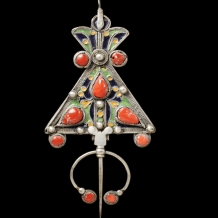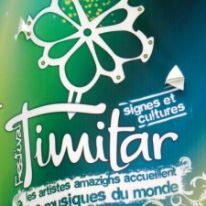The entire village seems to be buzzing with excitement as you follow your friend Fatima through the narrow winding roads and towards the beating drums that are getting louder with every step. Finally, as you turn the last corner you find yourself in front of a huge tent, brightly lit from the inside with lanterns and candles and filled with the sounds of people singing, dancing, and drums playing. Fatima grabs your hand and pulls you through the crowd and into the tent and you can’t help but to gasp in amazement. The inside of the tent has been swathed in silks of every imaginable shade of red, pink, and orange, from the ceilings hang ornate lanterns with flickering candles that seem to bring the very tent to life, silk and velvet cushions line the floor around tables piled with enough food to satisfy a king. Platters piled high with lamb, chicken, and vegetable kabobs, huge bowls overflowing with pungent saffron couscous, large steaming tagines full of chicken and lamb stews, and large plates piled high with honey covered dates and sticky pastries. Fatima looks at you and gives you a knowing smile, she told you Moroccan weddings were impressive, and this, she had explained, was only the last of a whole week of festivities and celebrations…
Traditional Moroccan weddings are elaborate and often quite expensive celebrations that typically begin seven days before the actual wedding ceremony. According to tradition, the parents of the groom would choose a bride for their son and would send a dowry to the bride in the form of household items and furniture. If the groom’s parents were very wealthy they might also send gold jewelry, cloth, and perfume to the bride.
Five days before the wedding ceremony the Furniture Party ceremony takes place. This “party” focuses on preparing the bride and groom’s new home. Members of the bride’s party, primarily women, deliver handmade blankets, a mattress, carpets, Moroccan couches and other necessary furniture.
Before the final Henna or Beberiska ceremony, the bride is given a milk bath by her nagaffa, or female attendants, in order to purify her. These female attendants are usually older married women, female friends, and relatives. After the bath the bride’s nagaffa help to beautify the bride by dressing her in an elaborately decorated kaftan, adorning her with jewels, and darkening her eyes with kohl, which is like a thick dark eyeliner.
Once the bride has been beautified her and her nagaffa take part in the Beberiska ceremony the night before the wedding. The hands and feet of the bride and her party are painted with henna to ward off illness and the evil eye. The bride’s henna is usually more elaborate and certain shapes and symbols meant to ward off the evil eye, bring good luck, and increase fertility are drawn. After the henna has been completed the older married women take the bride off to the side and explain to her the “secrets” of marriage.
After all of the pre-wedding ceremonies have been completed the female relatives and friends of the bride gather to prepare an extensive feast for the wedding day, enough food is always made to compensate for any unexpected guests who may arrive. Traditionally, the bride and groom would celebrate the marriage in separate places before the groom, accompanied by singing and dancing male friends and relatives would make his way to his bride. The groom would then be lifted up onto the shoulders of his friends, the bride would be lifted on a circular cushion or table, and they would both be carried to the bridal chamber for some private time. The two would then journey to their new home together and the bride would circle her home three times before finally stepping inside with her new husband.
While many of the old traditions are held sacred and still respected in Morocco some traditions, such as the milk bath and furniture party, are rarely followed in more modern areas. Despite the changes over time Moroccan weddings are still a festivity full of food, drumming, dancing, and merriment.







